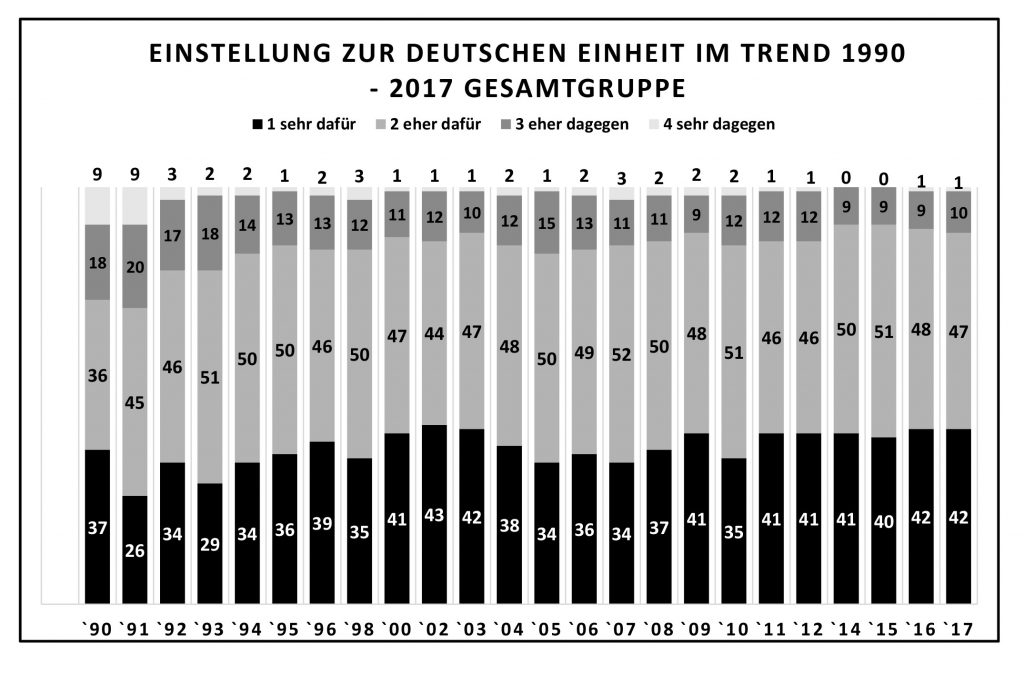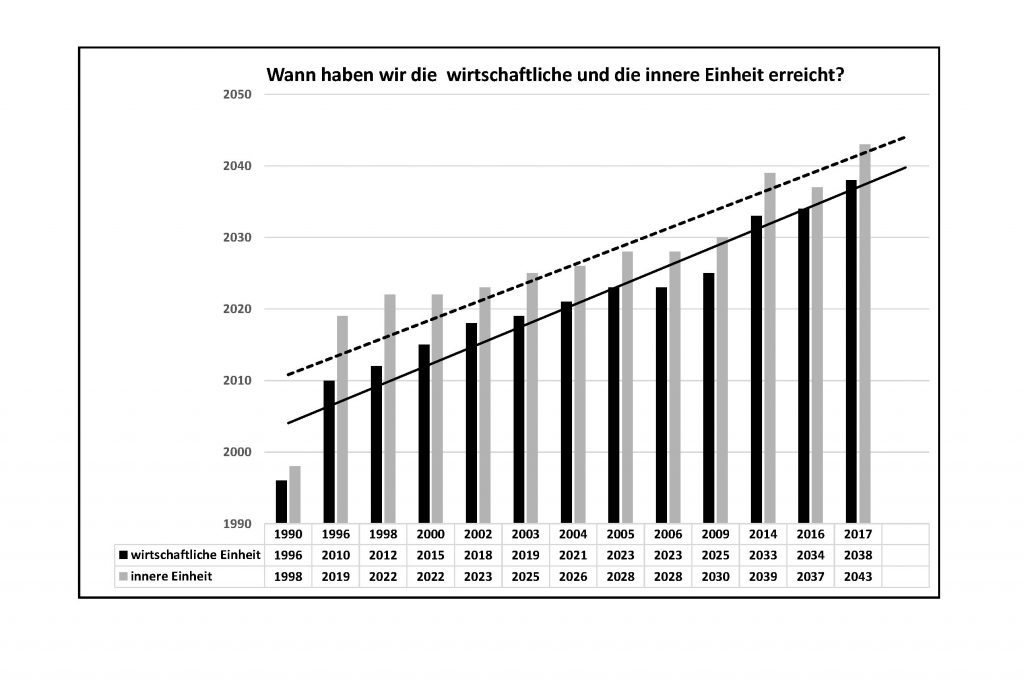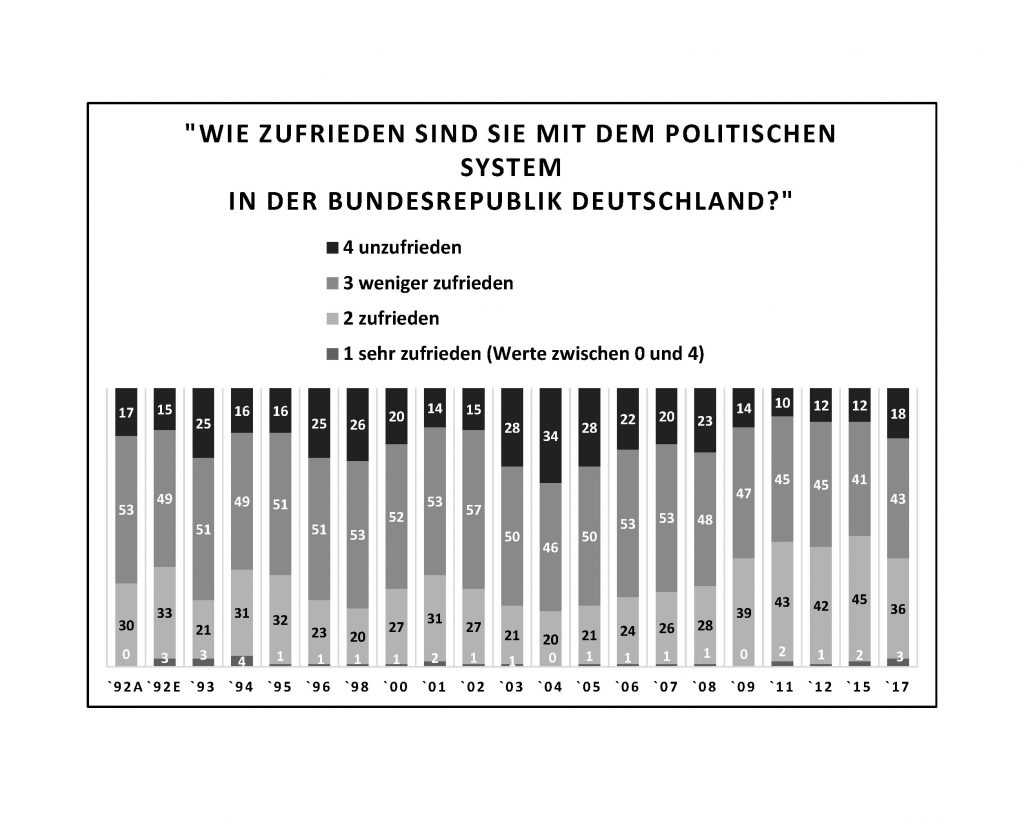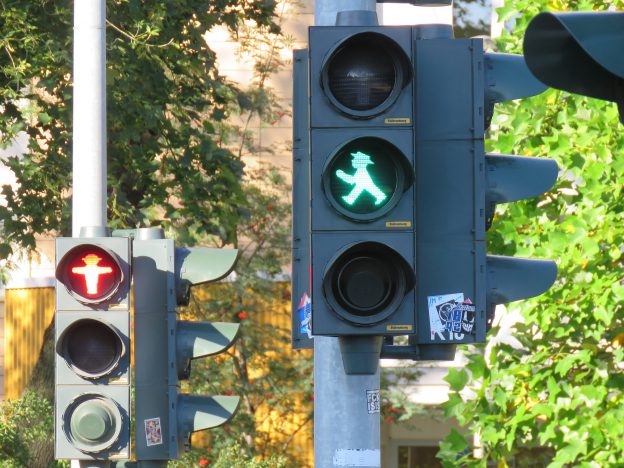The assessment of the German Reunification
The detailed study results, that can be read in the corresponding publications, show five tendencies regarding the experience of reunification:
1) The general support for German unity has remained high among the participants of the study since 1990. The relevant question was “How do you feel about the unification of the GDR and the dederal republic of Germany?”. Whereas in 1990 already 73% were “for it” or “very much for it”, the share has gotten up to 89% by 2017/18 (wave 30). At no time were there more critics/opponents than supporters.

Figure: Attitudes towards German unity from 1990 to 2017, (c) (r) 2019 Prof. Dr. Peter Förster, Saxon Longitudinal Study.
2) However, this general and unfractured support of the reunification does not mean that the uniting-process has already been completed from the point of view of the respondents – quite the contrary. Answers to the questions „How long will it take until the East Germans are doing as well as the West Germans?” or “How long will it take for East and West Germans to grow together into a real community?” are also relatively constant. The presumed periods of time become longer from year to year. In 2017/2018 the estimated duration for economic unity was 21 years and for internal unity 26 years. In 1990 it was „only “ 6 or 8 years.

Figure: Estimated duration (in years) until the economic and internal unity from 1990 to 2017, (c) (r) 2019 Prof. Dr. Peter Förster, Saxon Longitudinal Study
3) The criticism and dissatisfaction of the study participants regarding several individual aspects of the East German transformation process are reflected in a range of queried indicators, such as:
- trust in your own or your children’s future
- the assessment of school education, family support, solidarity, crime, or social security in compared to the former GDR with the current circumstances,
- the experienced unemployment or the fear of unemployment or
- satisfaction with politics. When asked “How satisfied are you with the political system in the Federal Republic?”, under 50 % expressed satisfaction over all survey waves in the last decades (1992: 30%, 2017/2018: 39%).

4) The attitudes, opinions and views of the participants are characterized by various influencing factors, that have been repeatedly shown in several analyses. Women, people living in East Germany, people with lower incomes, people with (longer) unemployment experiences and those who identified more strongly with the system in the GDR before 1989 are more likely to have a more critical/dissatisfied/negative view in very different areas.
5) Even 30 years after the fall of the Berlin Wall and the German Reunification, the GDR as a country of origin is not forgotten among the participants. It can be seen most clearly in the assessment of identity as a “GDR citizen”. Between 77% and 92% identify themselves “a little” or “completely” as “a citizen of the former GDR”. In the last wave 2017/2018 it was 89%. However, there are often also relatively positive assessments on other issues related to the former GDR. That concerns e.g. the statements:
- being glad to have experienced the GDR,
- the general assessment of life in the GDR as a whole,
- the assessment of socialism as a good idea, or
- the evaluation of different aspects of life in direct comparison of GDR and the Federal Republic.

References:
Berth, H., Brähler, E., Zenger, M. & Stöbel-Richter, Y. (Hrsg.) (2019). 30 Jahre ostdeutsche Transformation. Sozialwissenschaftliche Ergebnisse und Perspektiven der Sächsischen Längsschnittstudie. Gießen: Psychosozial-Verlag.

